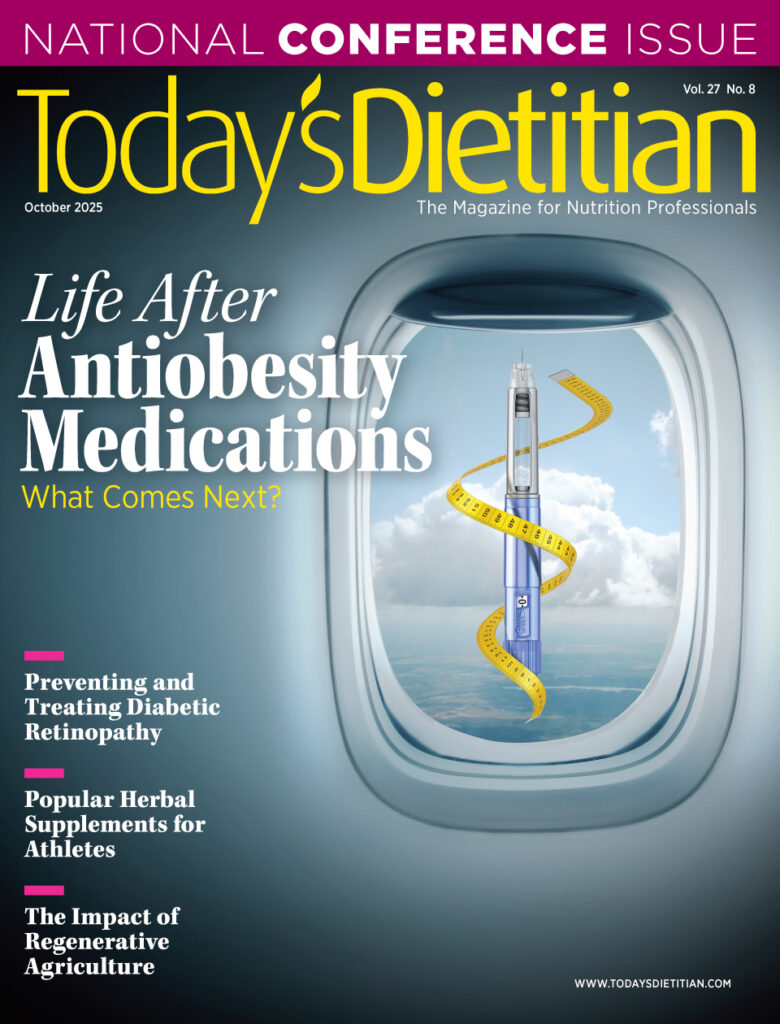By David Yeager
With the warmer weather already here in many parts of the country, most of your clients who’ve been suffering from cabin fever are ready to get out of the house and enjoy the sunshine. But as they contemplate the opportunities for increased outdoor activity, they’ll need to consider a potential warm weather hazard: dehydration.
While dehydration isn’t solely a concern during the hot summer months (people can become dehydrated during the winter due to illness), the more a person sweats, the more fluid must be replaced. For this reason, Jessica Crandall, RD, CDE, a spokesperson for the Academy of Nutrition and Dietetics, recommends clients start the day with a tall, cool glass of water.
“I always encourage my clients to drink a glass of water in the morning when they wake up,” Crandall says. “That puts their hydration sensor into play because they’ve been essentially dehydrating themselves all night long. Their body’s still been working, but they haven’t been hydrating.”
The health effects of dehydration can range from mild to severe. They can include dry skin, lips, and mouth; muscle cramping; and, in rare cases, vomiting. In addition, dehydration forces the kidneys to work harder, resulting in increased nitrogen concentrations in the urine. This causes the urine to become darker, which is a sure sign the body needs more water. Chronic dehydration causes the kidneys to work harder than necessary over an extended period so proper hydration is important for good kidney health, Crandall says.
Work Out With Water
Although most people are familiar with the recommendation to drink at least 64 oz (eight 8-oz glasses) of water daily, Crandall says that’s only the minimum amount necessary. Clients who exercise regularly should drink much more. On hot days, they should consume water before, during, and after exercise. Those who experience stomach discomfort from drinking water during workouts should consume at least 4 to 8 additional ounces after exercise for every 30 to 60 minutes of activity, depending on the individual and the exercise intensity, Crandall explains.
Not only should clients replenish their bodies with water, they also should restore the electrolytes lost through sweating. In rare cases, drinking large quantities of water without replacing electrolytes (namely sodium) can cause hyponatremia, a potentially life-threatening condition that results from extremely low sodium levels.
Some sports drinks are formulated to replace electrolytes. However, clients also can get electrolytes plus essential nutrients in a variety of fruits and vegetables that have the added benefit of a high water content, such as watermelon, honeydew, cantaloupe, berries, cucumbers, and bell peppers. Crandall cautions, though, that these foods alone don’t have enough liquid to reduce the need for drinking more water. And balancing the body’s need for water and nutrients is important for getting the most from a workout.
“If you’re an athlete and you’re focused on good performance, the last thing you want is to develop a cramp in your hamstring while running, so make sure you’re replenishing those nutrients—the sodium, potassium, carbohydrates—but also maintaining hydration,” Crandall says.
It’s important to note that excessive caffeine consumption can cause dehydration. For those who consider excessive to be a relative term, Crandall says 24 oz or less of coffee is considered a reasonable amount. If drinking water all day sounds like a chore, Crandall says there are many herbal teas you can drink that don’t contain caffeine.
To add flavor to water without the calories, add cucumber or lemon slices to a glass of cold water. Crandall says a squeeze of lemon also perks up a cup of hot water. But no matter how it’s consumed, the bottom line is that our bodies are designed to run on H2O. Every person has different fluid needs depending on their activity level and sweat rate, but replacing what’s lost is necessary to maintain health and receive the maximum benefit from exercise.
“Some of us need more water than others, but a good baseline is to start off making sure you get the minimum 64 oz of fluid [per day] and make sure you’re sipping on your water bottle throughout the time you’re active,” Crandall says.
— David Yeager is a freelance writer and editor based in Royersford, Pennsylvania.


